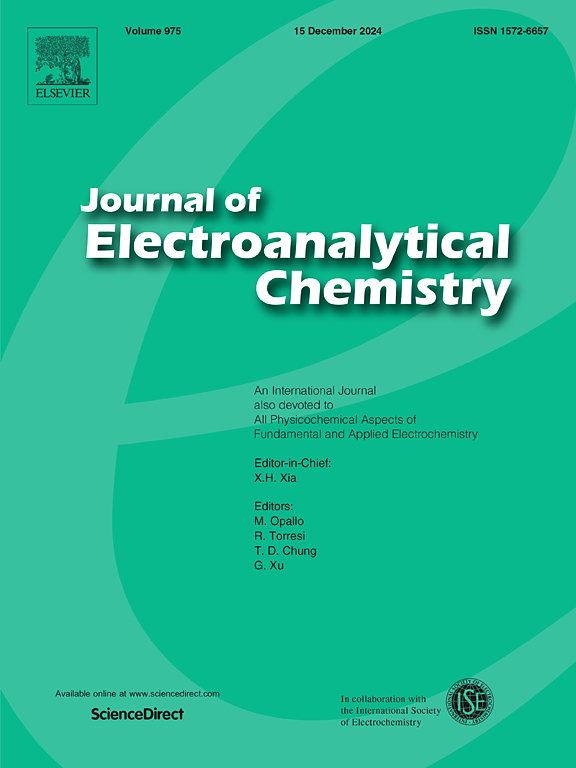Co&Mo bimetallic oxides derived from polyoxometalates (CoMo6) towards hydrogen evolution reaction
IF 4.1
3区 化学
Q1 CHEMISTRY, ANALYTICAL
引用次数: 0
Abstract
Engineering platinum-free catalysts with high activity and stability is essential for electrocatalytic hydrogen evolution reaction (HER). In this work, polyoxometalates-derived Mo-based oxide materials Co-Mo4O11-MoO2/rGO@X (abbreviated as Co-MoO/rGO@X, where X represents the synthesis temperature of 300, 400, 500 and 600 °C) were designed and synthesized on a nickel foam for HER under alkaline conditions. The Co-MoO/rGO@500 sample exhibited excellent HER catalytic activity, including an overpotential of 42 mV at a current density of 10 mA cm−2, a Tafel slope of 85.6 mV dec−1, and excellent long-term stability, due to its high intrinsic activity and superior conductivity. The layered structure of the Co-MoO/rGO@500 reveals a greater number of active sites and provides an abundant supply of oxygen vacancies, which significantly enhance the electrocatalytic activity. The incorporation of cobalt-doped molybdenum oxide in this study, along with the introduction of reduced graphene oxide (rGO), synergistically enhances the HER properties.
由多金属氧酸盐(CoMo6)向析氢反应生成Co&Mo双金属氧化物
具有高活性和稳定性的工程无铂催化剂是电催化析氢反应(HER)的必要条件。本文在碱性条件下,在泡沫镍上设计并合成了多金属氧酸盐衍生的mo基氧化物材料Co-Mo4O11-MoO2/rGO@X(缩写为Co-MoO/rGO@X,其中X表示合成温度为300、400、500和600℃)。Co-MoO/rGO@500样品表现出优异的HER催化活性,包括在电流密度为10 mA cm−2时的过电位为42 mV, Tafel斜率为85.6 mV dec−1,以及由于其高固有活性和优异的导电性而具有优异的长期稳定性。Co-MoO/rGO@500的层状结构揭示了更多的活性位点,并提供了丰富的氧空位供应,显著提高了电催化活性。在本研究中,掺入钴掺杂的氧化钼,以及引入还原氧化石墨烯(rGO),协同增强了HER性能。
本文章由计算机程序翻译,如有差异,请以英文原文为准。
求助全文
约1分钟内获得全文
求助全文
来源期刊
CiteScore
7.80
自引率
6.70%
发文量
912
审稿时长
2.4 months
期刊介绍:
The Journal of Electroanalytical Chemistry is the foremost international journal devoted to the interdisciplinary subject of electrochemistry in all its aspects, theoretical as well as applied.
Electrochemistry is a wide ranging area that is in a state of continuous evolution. Rather than compiling a long list of topics covered by the Journal, the editors would like to draw particular attention to the key issues of novelty, topicality and quality. Papers should present new and interesting electrochemical science in a way that is accessible to the reader. The presentation and discussion should be at a level that is consistent with the international status of the Journal. Reports describing the application of well-established techniques to problems that are essentially technical will not be accepted. Similarly, papers that report observations but fail to provide adequate interpretation will be rejected by the Editors. Papers dealing with technical electrochemistry should be submitted to other specialist journals unless the authors can show that their work provides substantially new insights into electrochemical processes.

 求助内容:
求助内容: 应助结果提醒方式:
应助结果提醒方式:


